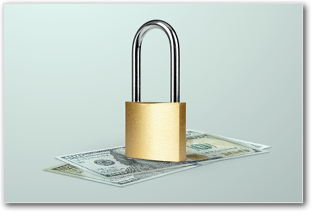- Applications and Forms
- ATM Locator
- Calendars
- Disclosures
- Financial Calculators
- Financial Wellness
- Home Ownership
- 7 Tips for Buying & Using Homeowner's Insurance
- The Two Sides of Co-Borrowing
- Understanding How the Equity in Your Home Can Work for You
- 5 Financial Goals You Can Achieve with a HELOC
- What is Your Home Really Worth?
- Is Downsizing Right for You?
- When It's Time to Tap Your Home Equity
- What is the Smartest Home Loan for You?
- Helpful Hints on Hiring a Contractor
- Money Management
- Smart Ways to Deposit Money
- Why You Should Or Shouldn't Buy Now, Pay Later
- Is Your Account at Risk? Simple Steps to Avoid Escheatment
- What to Do If Your Property Is Escheated
- Transferring Wealth
- 3 Keys to Start Car Shopping
- Why Credit Card APRs Matter
- Financial Preparedness in Emergencies
- The Time is Now to Introduce Your Beneficiaries to CEFCU
- Introduce Your Beneficiaries to CEFCU
- Talking Finances with Your Teens
- What's Involved When You're a Trustee or Executor to an Estate?
- How Your Accounts are Federally Insured
- How to Have A Meaningful Conversation about Joint Finances
- Prepare Your Financial Go-Bag
- Scam Awareness & Cyber Security
- Protect Yourself from Criminals Exploiting Artificial Intelligence to Deceive Victims
- Protect Yourself and Your Accounts from Credential Stuffing
- Multi-Factor Authentication & 5 Ways to Stay Cyber Safe
- Warning Signs of Scams & Identity Theft Schemes
- Tips on Avoiding Physical & Digital Theft
- Prevention is Key to Cybersecurity
- Trending Scams: Stay Alert and Aware
- Beware of COVID-19 Vaccine Scams
- Beware of Gift Card Payments, Pop-Ups and Links
- Protect Yourself and Your Finances
- IRS Warns on Coronavirus-Related Scams
- Phone Scams
- 10 Things You Can Do to Avoid Fraud
- Alarming Increase of Scam Calls
- IRS Tax Scams Continue Year-Round
- Safeguard Your Identity
- Home Ownership
- Focus Newsletter
- Holidays
- Privacy Notice
- Schedule of Fees
- Security Information
- Tax Statements
- Update Your Contact Information
- Wiring Instructions
Financial Wellness
What to Do If Your Property Is Escheated
Reclaim property that was transferred to the state government.

As a financial institution, we are required to follow the escheatment process as governed by state laws. Escheatment is a legal process requiring financial institutions, insurance companies, and other entities to transfer dormant property to the state. Unfortunately, each year, this results in transferring funds from inactive accounts to the government.
The state of California requires unclaimed property — bank accounts, stocks, uncashed checks, insurance benefits, wages, contents of safe deposit boxes, and even real property — with dormancy periods of 3 years to be escheated. The rules and time frames for escheatment vary by state.
How to Reclaim Escheated Property
If your property has been transferred to the state, you may still reclaim those escheated funds.
Keep in mind that each state has its own rules, time frames, and processes for escheatment.
Escheat Claims |
|
|---|---|
Escheat Claims in the State of CaliforniaMembers should contact the State of California’s Controllers office. |
|
|
|
Search for Unclaimed Property and Check Claim Status in the State of California |
|
Escheat Claims in Other StatesFor all other states, please refer to the specific state’s unclaimed property website. |
|
|
You may access the contact information and website link for the official unclaimed property program for each state at: |
|
Search for Unclaimed Property
Check state-run websites or databases to see if your property is listed. Each state has a dedicated office for this. You can enter your name or the name of a deceased relative to see if there are any unclaimed assets.
File a Claim
You’ll need to file a claim with the state’s unclaimed property office if you find property that belongs to you. This usually involves filling out a claim form, along with submitting proof of identity and ownership.
Documentation to prove your ownership of the property may include:
- A government-issued identification
- Proof of address
- Relevant documentation linking you to the property
- For heirs, proof of relationship to the deceased owner
Verification and Payment
The state will review the claim for escheated property and verify the information provided. The time needed for the verification process will depend on the claim’s complexity and the state’s procedures.
If the state deems the claim of escheated funds valid, they will release the property or its equivalent value to the claimant. This may be done via check, direct deposit, or other means, depending on the state’s policies.
Contact the State Office
If you have trouble locating or claiming your property, contact the government office handling escheatment for your state.
Keep Records
Maintain records of all communications and documents related to your claim. This can be useful if any issues or delays occur.
Follow-Up
In some cases, additional information or documentation may be required. Be prepared to respond promptly to any requests from the state’s unclaimed property office to avoid delays.
Appeals
If your claim is denied, you may have the option to appeal the decision. The appeals process varies by state, so you’ll need to follow the specific guidelines provided by the state’s unclaimed property office.
Keep Your Assets Protected
At CEFCU, before escheatment occurs, we make diligent efforts to contact account owners, sending multiple notices to the last known address and attempting other forms of communication. When these efforts fail, we must transfer the property to the state authority, which holds the funds for a limited period to allow the owner, beneficiary, or legal heir to make a claim.
Our Financial Wellness article, Is Your Account at Risk? Simple Steps to Avoid Escheatment, helps explain how to prevent escheatment.
Stay in control of your financial future!






